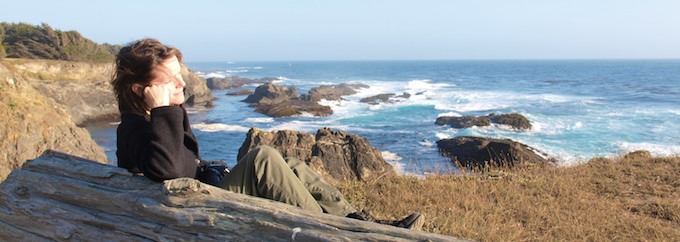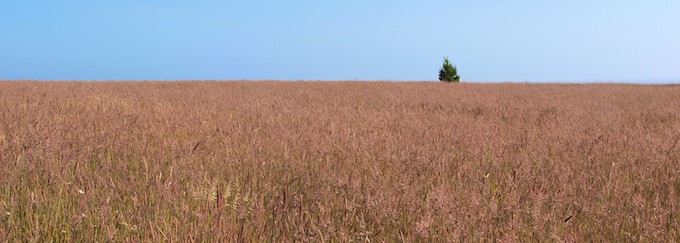WALLY
Tell me — why do we require a trip to Mount Everest in order to be able to perceive one moment of reality? I mean, is Mount Everest more real than New York? Isn’t New York real? I think if you could become fully aware of what existed in the cigar store next door to this restaurant, I think it would just blow your brains out! Isn’t there just as much “reality” to be perceived in the cigar store as there is on Mount Everest? You see, I think that not only is there nothing more real about Mount Everest, I think there’s nothing that different. Because reality is uniform, in a way. So that if your perceptions — if your own mechanism is operating correctly — it would become irrelevant to go to Mount Everest, and sort of absurd! . . .
ANDRE:
. . . I agree with you, Wally! But the problem is that people can’t see the cigar store, now. I mean, things don’t affect people the way they used to. It may very well be that ten years from now people will pay ten thousand dollars in cash to be castrated, just in order to be affected by something!
~ Wallace Shawn and Andre Gregory in My Dinner With Andre
I saw My Dinner With Andre when it was released in 1981. It was cinematically audacious (as Roger Ebert wrote at the time) because it was 110 minutes of two friends talking — two friends “alive on the screen, breathing, pulsing” as they work their way to a philosophical consensus.
My Dinner With Andre and . . . Photography
It was always the above piece of dialogue that stuck with me, and I came back to thoughts of My Dinner With Andre after some time in the field with my camera. Not everyone can spend five years in a spiritual quest, as the character Andre Gregory did, hallucinating over clouds and picking blueberries. But all of us ponder the meaning of existence, relative to our own experience.
When Wally says, “if you could become fully aware of what existed in the cigar store next door to this restaurant, I think it would just blow your brains out!” — from a photographer’s POV, that’s true. With a Raynox 150 and some raindrops, or rust or popcorn kernels you can blow your senses with the visuals.
But in a way, that’s the counterpoint to how I used to photograph — with an insatiable drive and purpose. So driven, in fact, that I lived on five hours of sleep most nights, chugging gallons of Major Dickason’s coffee.
The Getting
When I first realized the power of my new telephoto lens combined with two boots on the trail, my enthusiasm for capturing the moment was overwhelming. My early wildlife archives are filled with poor compositions of animals turning their faces into the shadows, or figments of birds in flight, blurry, indistinguishable. It took more than a year for that fire-in-the-lens to subside — to morph into a more deliberate shutter release.
I honed my photographic chops, for sure. But what was I missing in my singular focus? A lot, actually. Nature has always been my medicine, my god — my sanctuary, my inspiration, my grounding. And yet, because of my newfound passion, I was juking past my spiritual anchors . . . to get the shot.
My turning point was a walk I took with Hugh and a dear friend. I wanted to get some shots of Sandhill Cranes which, up until that point, I’d never photographed. Our friend suggested a hiking route that would place us where the cranes would be, right about the time the cranes would be there. Perfect. But a slight miscalculation led us in circles. When we finally reached the spot where the cranes normally dance at dawn, they’d already left — and taken with them my enthusiasm.
The whole reason we were there was to see the cranes. And missing them was a huge disappointment. The unexpected arrival of hunters across the river, dropping ducks, didn’t raise my spirits, either. But my negative reaction to a perfectly beautiful outing with loved ones forced an internal double take: Here I was, intent on the “getting,” when the “being” — the experience of meeting two friends, in the rose-quartz light of dawn — should have been enough. With gunshots shattering the peace over the river, the cranes airborne, the teals and the Canvasbacks cowering behind reeds from the human assault — my goal-driven ideas of photography dissolved in an instant.
The Being
We have a strong thread of point-based thought and theology — utilitarianism, consequentialism, Puritanism — which can lead to mechanistic ideas of how we humans interact with our environment. Kierkegaard said, “far from idleness being the root of all evil, it is rather the only true good.” He was alluding to the state of busyness people employ to fend off boredom — a perspective that doesn’t allow for appreciation of the mundane. As the bar rises on what constitutes excitement, success, marketability, purpose — being blissfully idle becomes tantamount to malice. But, we all love white space on the page . . . to break up the clutter. Idleness is like the white space of life.
The Existentialists were right about some things — or all things (if you’re an Existentialist).
“It may very well be that ten years from now people will pay ten thousand dollars in cash to be castrated, just in order to be affected by something!”
I think Andre’s line here is as relevant as ever, particularly where nature is concerned. There’s subtlety in sitting deep in a field of fescue, or on a Pacific bluff in the winter — not needing to feel anything but the damp brume across your face. There’s a soulfulness and mindfulness in seeing a dove or a bobcat or a blacktail before your eyes and not wanting to do anything but watch — or even turn away, just knowing he or she is there. To simply let her be.
Those experiences do affect people — at least the first time. They’re just so easy to forget when the societal measure of “aliveness” becomes stimulation and engagement, as Andre suggests, instead of the profound sense of “aliveness” which comes from hearing the nothingness and feeling the intangible.
Mindfulness
I once took a class based on the works of Jon Kabat-Zinn, a practice known as “mindfulness” training. The classes are often recommended for people dealing with chronic pain or stress, but the techniques, like any meditative or spiritual practice, help bring people back to this place of inherent wholeness. You’re taught to feel the blood surge through your heart’s chambers, to bore down to the core of physical pain and reduce it to a series of sensations, to taste every morsel you put in your mouth and be, well, “mindful” of everyday, rote actions with heightened senses.
“. . . is Mount Everest more real than New York? Isn’t New York real?”
At the end of My Dinner With Andre, Wally takes a taxi home and sees his own spiritual anchors in the street scenes of New York. He comments on how there’s not a place in the city that isn’t connected to him through memory. It’s the coda to a conversation that embraced everything from talking apparitions to airline passengers with animal faces to meditators negotiating verbally with insects. That was Andre’s reality, as he traveled the world seeking himself. But was Wally’s experience, entrenched in New York, any less spectacular? This coda is what I liked best about the film — that it refused to assign intellectual superiority to Andre’s quest for meaning.
From a photographic perspective, there is no subject more real or valid than another. There’s a magic that arises from abandoning one’s preexisting ideas, and turning the eye — and the lens — away from one’s personal Mount Everest, and toward the mind-blowing life in the cigar store next door. There’s also a serenity that comes from setting down the camera and simply being with life — outside the frame and the pixel.
As a younger, pre-Rolling-Stone-interview John Mayer once wrote:
You should have seen that sunrise with your own eyes,
It brought me back to life,
You’ll be with me next time I go outside,
No more 3×5.
——————-
Okay, so someone had to take this picture while I was just “being.”

—————–
Related Post: Wildlife & Nature Photography Ethics



Love the new layout of your site! And you look so peaceful in that photo while soaking it all in 🙂
Thanks, Court. The California coast turns me into mush. I can’t think of times when I’m more happy to be alive than I was at that moment. The visceral connection with the wind, the ocean, the wildflowers, the pelicans flying overhead . . . it’s indescribable. So yep. That was me looking peaceful. You should see me today, though. 😉
One more request for the story of the Fascist Buddhist, please.